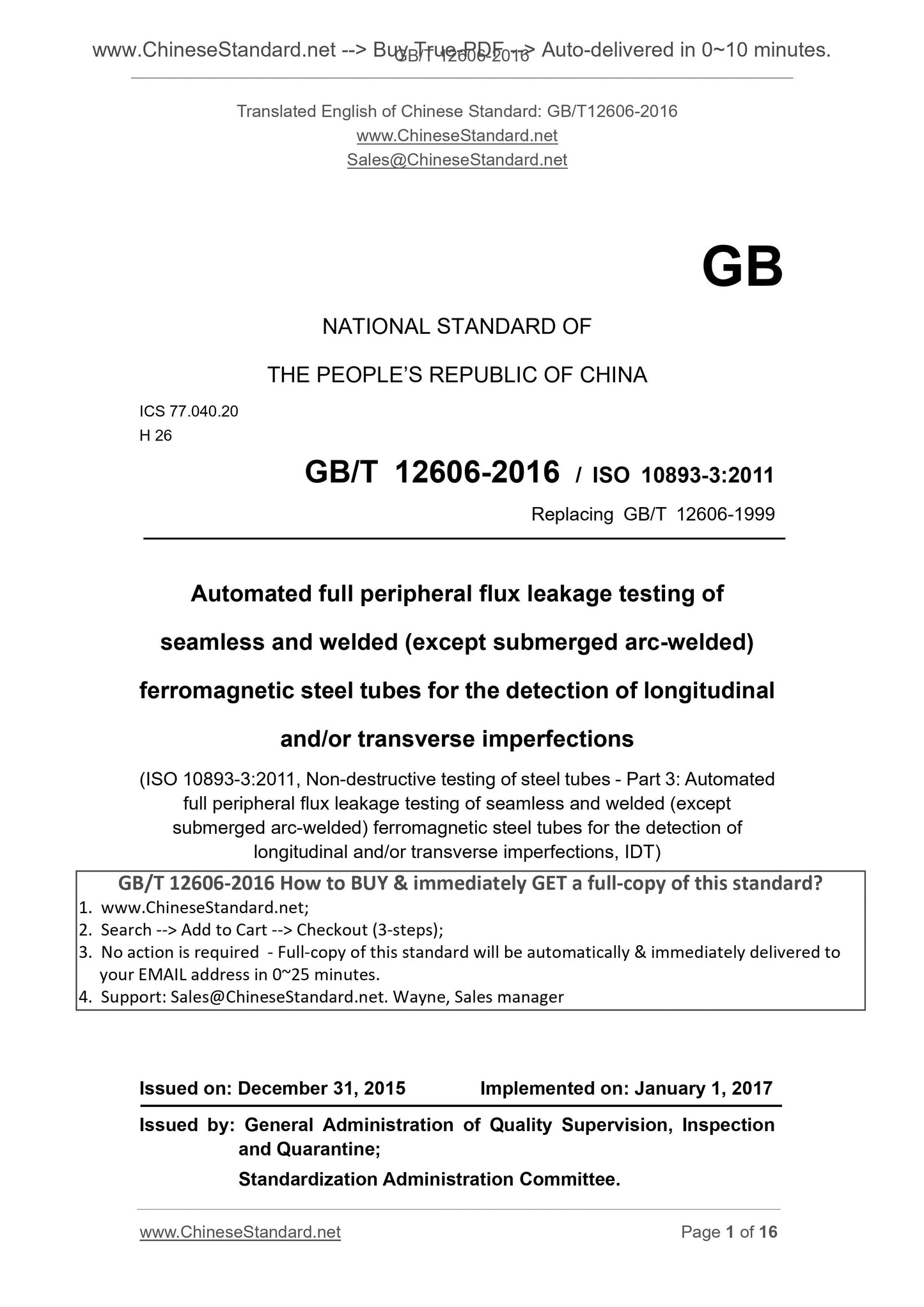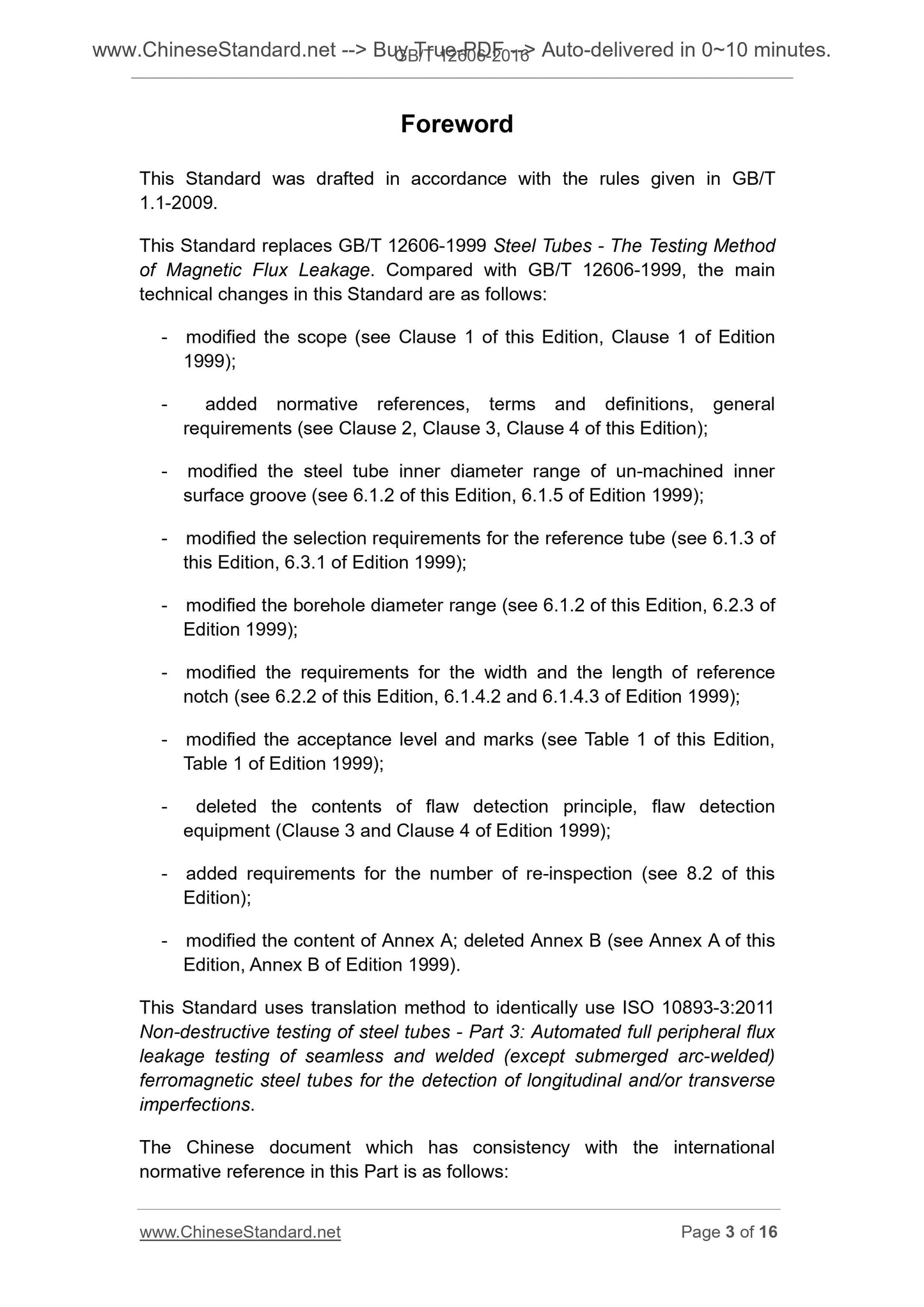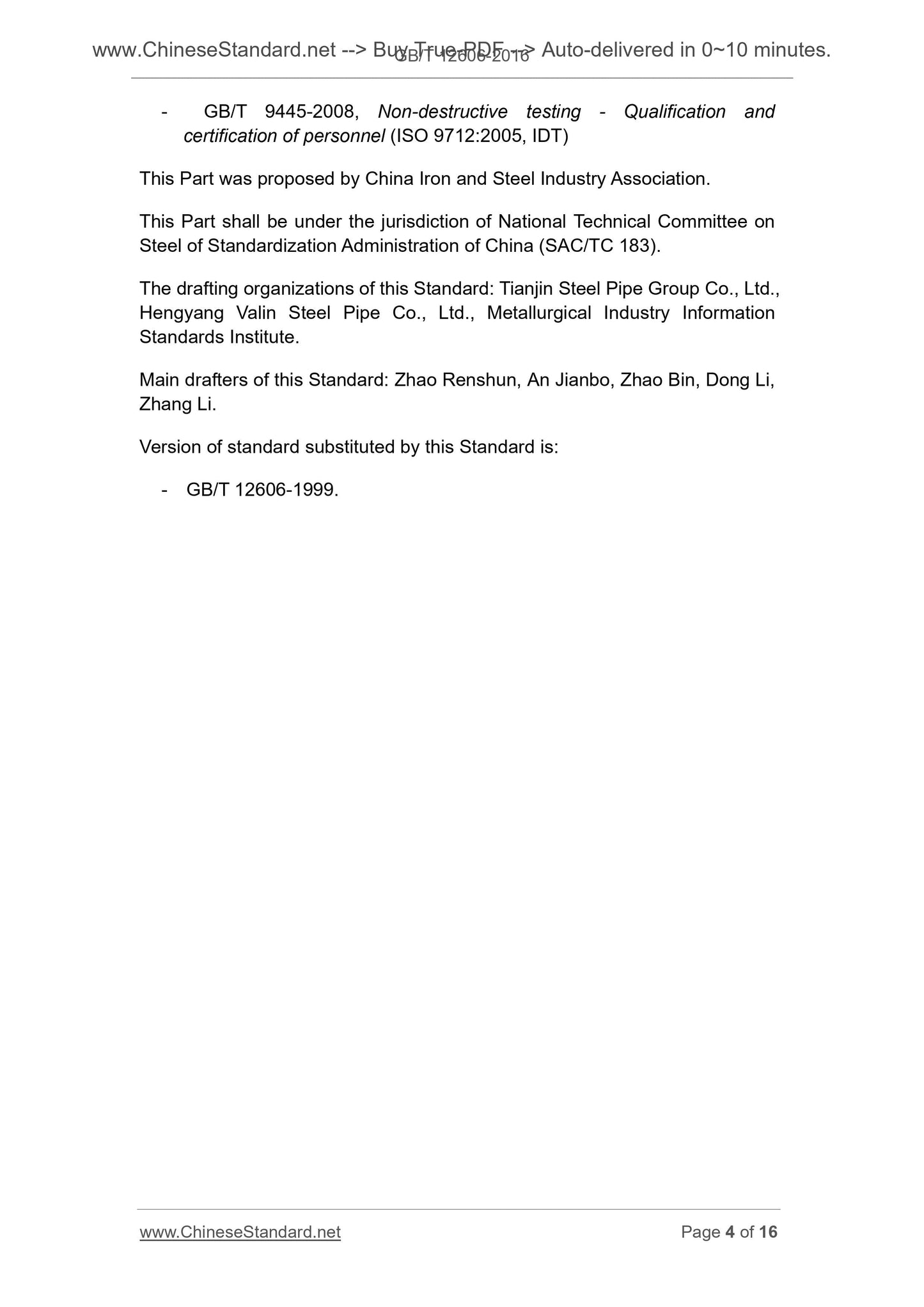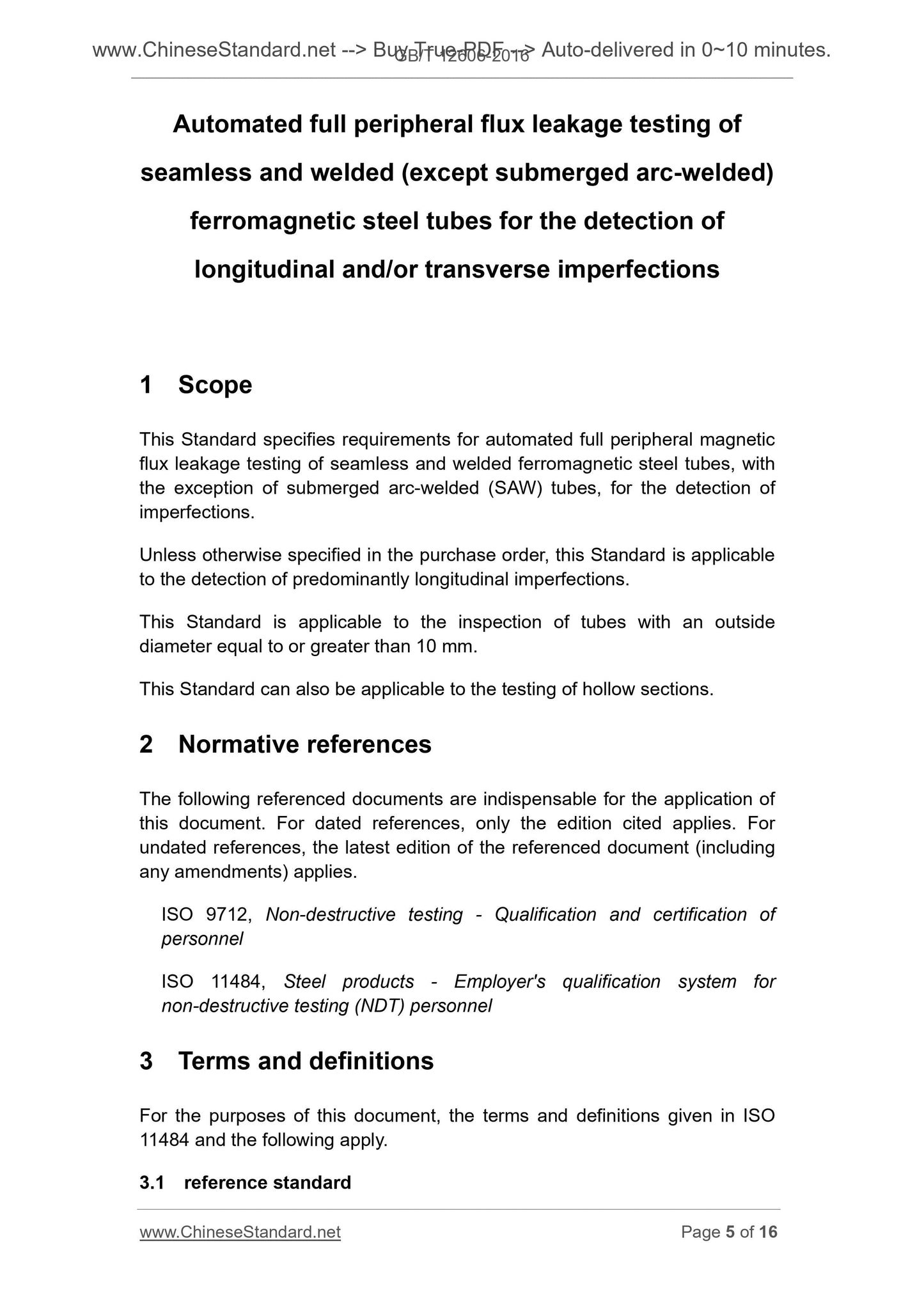1
/
of
5
www.ChineseStandard.us -- Field Test Asia Pte. Ltd.
GB/T 12606-2016 English PDF (GB/T12606-2016)
GB/T 12606-2016 English PDF (GB/T12606-2016)
Regular price
$90.00
Regular price
Sale price
$90.00
Unit price
/
per
Shipping calculated at checkout.
Couldn't load pickup availability
GB/T 12606-2016: Automated full peripheral flux leakage testing of seamless and welded (except submerged arc-welded) ferromagnetic steel tubes for the detection of longitudinal and/or transverse imperfections
Delivery: 9 seconds. Download (and Email) true-PDF + Invoice.Get Quotation: Click GB/T 12606-2016 (Self-service in 1-minute)
Newer / historical versions: GB/T 12606-2016
Preview True-PDF
Scope
This standard specifies the seamless and welded (except submerged arc) the whole circumference of ferromagnetic steel automatic defect detecting magnetic leakage requirements.Unless otherwise specified in the purchase order, this standard is mainly used for the detection of longitudinal imperfections.
This standard is suitable for detecting an outer diameter of 10mm is greater than or equal to steel.
This standard is also applicable to the detection of the hollow profile.
Basic Data
| Standard ID | GB/T 12606-2016 (GB/T12606-2016) |
| Description (Translated English) | Automated full peripheral flux leakage testing of seamless and welded (except submerged arc-welded) ferromagnetic steel tubes for the detection of longitudinal and/or transverse imperfections |
| Sector / Industry | National Standard (Recommended) |
| Classification of Chinese Standard | H26 |
| Classification of International Standard | 77.040.20 |
| Word Count Estimation | 11,127 |
| Date of Issue | 1990-12-18 |
| Date of Implementation | 2017-07-01 |
| Older Standard (superseded by this standard) | GB/T 12606-1999 |
| Regulation (derived from) | National Standard Announcement 2016 No.14 |
| Issuing agency(ies) | General Administration of Quality Supervision, Inspection and Quarantine of the People's Republic of China, Standardization Administration of the People's Republic of China |
Share









